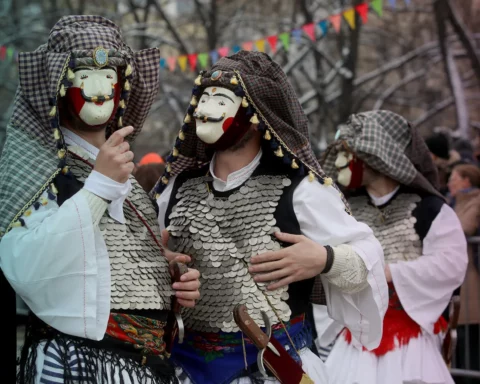There are many amusing word translations in the Slovenian language. Some make more sense to everyone, others feel quite airtight. But there is probably nothing more intriguing than the Slovenian calendar. The names of the months, apart from formal and colloquial ones, also have their traditional and local counterparts. It’s complicated throughout the whole year…
January
Starting with January (januar), whose archaic name is prosinec. This could refer to an old Slavic word prosinoti (“to shine through” or “sun shining through”). But it as well could be a reference to prosen kruh, a bread made from millet; or to prositi – “to beg”. These are by far not all names of January in Slovenian – depending on the region, you can hear brumen (from Italian bruma – meaning “the depth of winter”), mali božičnjak (“little Christmas”), prvnik (as the “first” month of the year) or zimec (while zima means “winter”).
February and March
In Slovene, an icicle is called ledena sveča (an “ice candle”) – no wonder February’s old name – svečan, has something to do with this fact.
March (marec) might seem confusing – while at this time, many countries in Europe are still experiencing wet weather and melting snow, it’s when the dry season starts in the southern parts of Slovenia. Hence, sušec (from “dry conditions”). But it’s also getting windy, hence vetrnik (from “wind”) and green – that’s why some regions call March traven (from “grass”).
April, May, and June – the “grassy” months
Following this lead – April is called mali traven (“small grass”), and May – veliki traven (“big grass”); June’s name relates to flowers, and so it’s called rožnik (which comes from “flowers” but also means “rosary”).
Summer
Summer marks the start of the reaping season, which was traditionally done by using a sickle (srpan). Starting in July – hence mali srpan (“small sickle”), to fully go on in August – veliki srpan (“big sickle”).
Autumn
September carries the old name jesenik (or jesenščak) – from the Slovene word for autumn, kimavec (“nodding fruit”) or poberuh (from “collecting”) – which might refer to picking fruits or mushrooms.
October’s traditional name shouldn’t be wondering anyone – this is when the winemaking season in Slovenia starts. Vinotok means “wine flow”; other versions also suggest wine references: vinec/vinšča or moštnik (from “most” – young wine).
The falling November leaves gave the month its name listopad (falling leaves) or listognoj (rotting leaves). Others call it martinščak (from Martinovanje – tasting the young wine on St. Martin’s Day) or vsesvečnjak/vsesvečak (from All Saints Day).
Cold, colder, coldest
December – gruden (from „clumps/clodes“ – of wood or soil…?), respectively kolednjak (“carol singer”), veliki božičnjak/božič (“Christmas”) – closes the collection of traditional Slovenian month names.
Where does all this fuss come from?
The Slovenian language is considered to be one of the most archaic in Europe. It is spoken by only ca. 2.5 million people, but Slovenians use about 40-50 dialects at the same time. No wonder as this small country ranges from a landscape of high, snow-capped mountains to a temperate Mediterranean environment. Regions – partially influenced by neighboring countries (Austria, Hungary, Croatia, and Italy) – differ not only geographically but also culturally and linguistically. Therefore, for some Slovenes, a month may be perceived as unpleasant or, on the contrary, bringing relief after a difficult season. The point of view depends on the point of residence!







